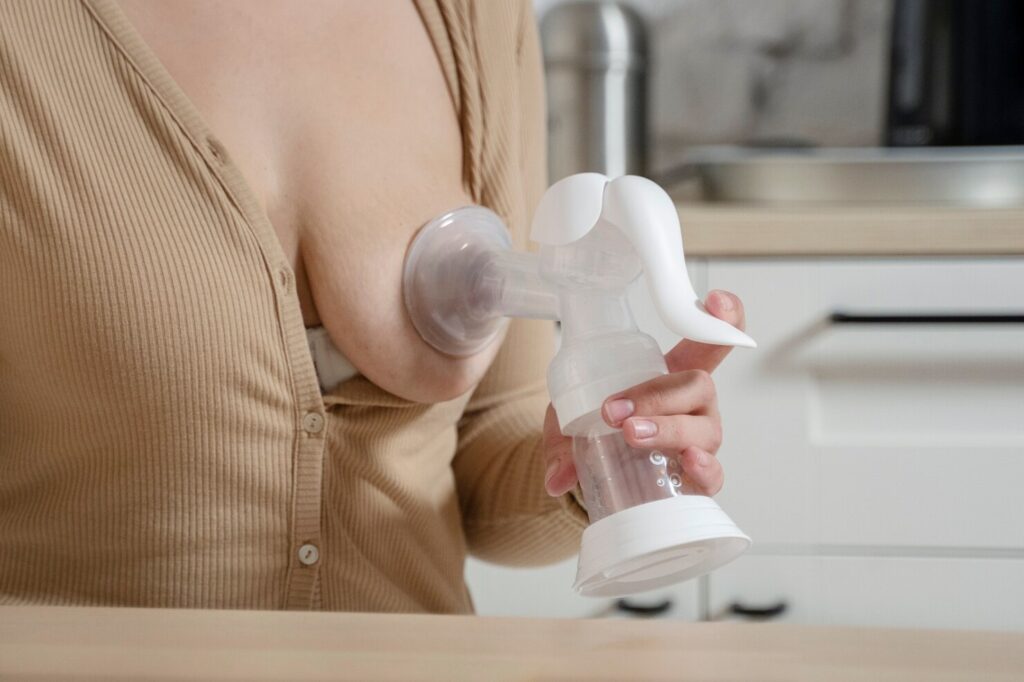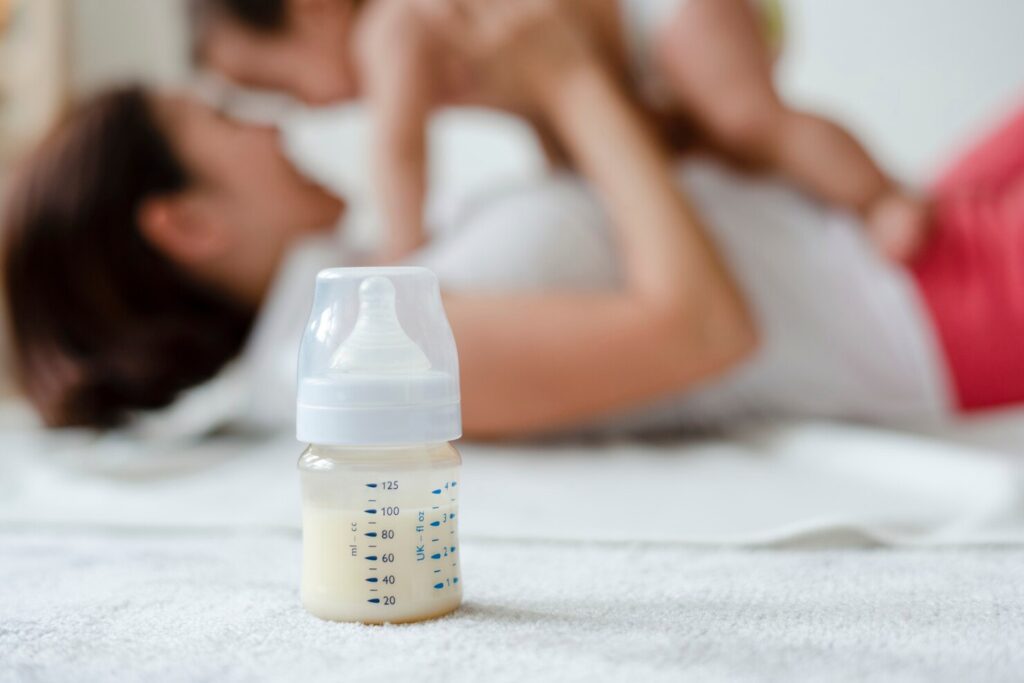Many mothers do not want to stay on maternity leave for a long time and aim to return to work quickly, yet they do not want to leave their child without breast milk. With breastfeeding, if for some reason a woman cannot breastfeed her baby directly, it’s possible to continue feeding the infant with expressed breast milk from a bottle. Breast milk can be pumped manually or with a breast pump.
If you decide to use manual expression, it is necessary to do it correctly by mastering the basic rules and techniques. The wide range of breast pumps available on the market allows nursing mothers to choose the most convenient and comfortable device for pumping according to their own priorities and requirements.
Why express breast milk?
Not long ago, breastfeeding mothers were advised that it was necessary to express milk after feeding. Many myths surrounded this topic, which are now outdated. Modern specialists believe that expressing breast milk is not mandatory. There are certain indications for which doctors recommend expressing milk:
- Maternal health conditions – when prescribed medications make breastfeeding impossible;
- Excessive milk production – right after childbirth, when lactation hasn’t yet stabilized, to make the breast less hard and swollen, easing the child’s ability to feed;
- Inability to breastfeed the baby directly – after a cesarean section undergone by the mother;
- Painful sensations – in case of lactostasis, to accelerate fluid movement and resolve blocked milk ducts.
When and how often should you pump?
There is no definitive answer to the question of how often and when one should pump. Some experts suggest doing it after feeding, while others recommend before. To understand how often pumping should be done, a mother should consider her specific situation:
- for premature birth and feeding through a tube – pump as often as necessary for feeding;
- if the baby is weak, developing physiological jaundice, or nursing poorly – to maintain lactation, massage the breast 3-4 hours after birth, and if nursing lasts up to 10 minutes, you can pump colostrum for 10 minutes by drops;
- when separated from the infant or using medications incompatible with breastfeeding – pump 7-8 times a day to maintain lactation;
- breast tenderness – pump once a day, if necessary, no more than 2-3 times.
- lactation attenuation, baby weight loss – up to 5-6 pumpings per day.

How to express milk by hand
You can start expressing breast milk 5-7 days after childbirth. The procedure is not recommended after 9 PM. It should not be done more than 3 times a day, and milk should not be expressed completely to the last drop. Alternating between bottle feeding and natural breastfeeding will be the best solution. To relax and make hand expression effective, drink a glass of warm herbal tea, massage the mammary glands, take a shower, or apply a warm towel to the breast.
It is necessary to master the technique of expressing breast milk by hand – specialists advise on how to do it correctly:
- place fingers under the breast, grasp the areola with the thumb;
- make several undulating movements up and down from the areola;
- obtain the first drops of milk by gently pressing the breast;
- When performed correctly, the first drop will be followed by a stream;
- The duration of pumping one breast should not exceed 5 minutes.

How to Use a Breast Pump
Some women prefer to express breast milk using a breast pump. First, you need to choose the most suitable one – either a single or double electric pump or a manual one. Before starting to use any of them, it’s essential to carefully read the user manual.
As with manual expression, certain rules must be followed, including recommendations:
- Take the most comfortable position – sitting, with a slight forward lean;
- Place the breast pump funnel against the nipple, gently supporting the breast;
- Then, start gently compressing the piston if using a manual pump; if using an electric pump, be sure to strictly follow the instructions;
On average, the procedure of expressing breast milk with a breast pump takes approximately 10 minutes.

Pumping for milk stasis in the breast
Most breastfeeding mothers face a serious breastfeeding issue known as milk stasis. One way to eliminate milk stagnation and duct blockage is to increase the frequency of nursing. In some cases, mothers cannot do this, so pumping breast milk can solve the issue. Before starting the procedure, it is necessary to use the targeted effect of a warm shower or gently massage the breast.
You should pump a little, just to relieve the mother’s condition. Otherwise, the body will perceive it as a signal for increased lactation, and more milk will arrive, worsening the situation. Expressing breast milk
Express milk by hand in this case by moving along the milk ducts from the base to the nipple. If necessary, you can use a breast pump for expressing.
How to Stimulate Milk Flow Without a Baby
Expressing breast milk is one effective method to maintain and improve lactation. Besides this, there are other ways to stimulate the flow of new milk without directly nursing the baby at the breast. For this, it’s essential to ensure sufficient and quality nutrition for the breastfeeding mother.
Before feeding, massage the breast from the periphery to the nipple, make it a rule to drink a glass of hot tea with milk or milk, and soak your feet in warm (not hot) water. In the evening hygiene procedures for a nursing mother, it is necessary to include treating the breast with a contrast shower and rubbing it. In addition to folk remedies that stimulate milk production, such as cream with cumin, carrot juice with milk, and others, after consulting a doctor, you can also take medical medications that they prescribe.
Contraindications for Expressing Breast Milk
Modern medicine sees no contraindications for expressing breast milk, as there are no known justified reasons preventing milk expression. On the contrary, this procedure can be performed to maintain lactation in cases where the nursing mother is seriously ill, unable to frequently breastfeed the infant, or is overwhelmed by milk influx, which comes in large quantities.
However, there are also no clear indications for expressing. The procedure effectively serves the purpose of maintaining lactation, helping to remove milk residue and contributing to the arrival of new milk. It is important to overcome the challenges in the period immediately after the child is born. Then, the process of how milk comes in can be adjusted. Established lactation and the absence of unforeseen circumstances will eliminate the need to resolve the issue of breastfeeding through expressing.



Download the app and get 7 days free use
 eng
eng rus
rus deu
deu spa
spa fra
fra ita
ita por
por srp
srp tur
tur ukr
ukr por
por bos
bos

